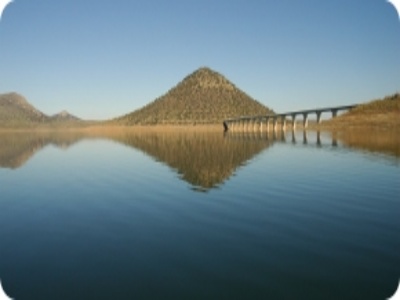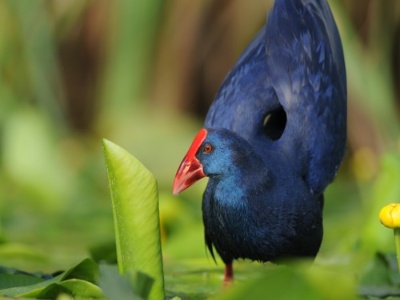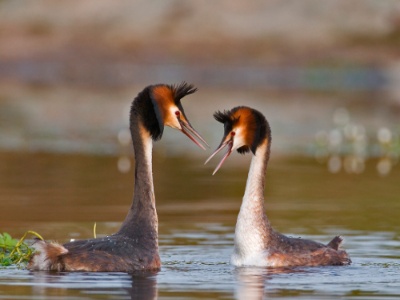Reservoirs and Dams
Press
Reservoirs and Dams
Recommended Seasons: SPRING AND WINTER
The two main rivers, the Tajo and the Guadiana, are dammed for almost all of their passage through Extremadura, being used for hydro-electricity production and the supply of water to the population and the irrigation of crops. The shortage of water during the summer months, which can be prolonged, has led to the building of numerous reservoirs and dams. In fact, Extremadura is the region with the greatest length of interior coastline in the Iberian Peninsula, measuring almost 2,000 kilometres. These artificial wetlands are used intensively by the bird-life for which they are a real oasis.
On the islands in the reservoirs, breeding colonies of collared pratincole, gull-billed tern, black-winged stilt, little ringed plover and, occasionally, common tern can be found. The great cormorant has also begun to nest in recent years on some reservoirs.
In the shallower dams with floating vegetation little grebe, great-crested grebe, coot and at times, whiskered tern and lapwing make their nests. Amongst the nesting waterfowl are gadwall and shoveler and sometimes the red-crested pochard and pochard.
The ornithological value of these wetlands is much greater in winter as Extremadura is one of the most important regions of the Iberian peninsula for wintering, aquatic species with over 250,000 birds spending the winter including populations of mallard, pintail, wigeon, gadwall, shoveler, pochard, tufted duck, and red-crested pochard. The wintering populations of great crested grebe, little grebe and black-necked grebe can be considerable in some places.
In winter several reservoirs are used as communal roosts by common cranes, gulls and great cormorants. Osprey can be seen regularly on the reservoirs during their migrations and the black stork gathers in large numbers (over 100 birds) on reservoirs and dams in the course of their migration after breeding.
On the walls of dams crag martin and the rock dove can be seen and on occasions also blue rock thrush, black wheatear or rock bunting.
A large number of reservoirs are included in a network of SPA's in Extremadura amongst the most important being the 'Embalse de Orellana' (Orellana Reservoir) and 'Sierra de Pela' (Pela Range), 'Llanos de Zorita and Embalse de Sierra Brava' (Sierra Brava Reservoir), 'Embalse de los Canchales' (Canchales Reservoir), 'Embalse de Montijo' (Montijo Reservoir), 'Embalse de la Serena' (Serena Reservoir), 'Embalse de Arrocampo' (Arrocampo Reservoir), 'Embalse de Brozas'(Brozas Reservoir), 'Embalse de Borbollón' (Borbollón Reservoir), 'Embalse de Alcántara' (Alcántara Reservoir), 'Embalse de Talaván' (Talaván Reservoir), 'Embalse de Valdecañas'(Valdecañas Reservoir), 'Embalse de Valuengo' (Valuengo Reservoir), 'Embalse de Gabriel y Galán' (Gabriel y Galán Reservoir), and 'Embalse de Vegas Altas'(Vegas Altas Reservoir). The most important dams and lakes are 'Llanos and complejo lagunar de Albuera' (Albufera Lakes Complex), 'Complejo Lagunar Egido Nuevo' (Egido Nuevo Lakes Complex) and 'Charca de la dehesa boyal de Navalmoral' (Dehesa Pond at Navalmoral).




